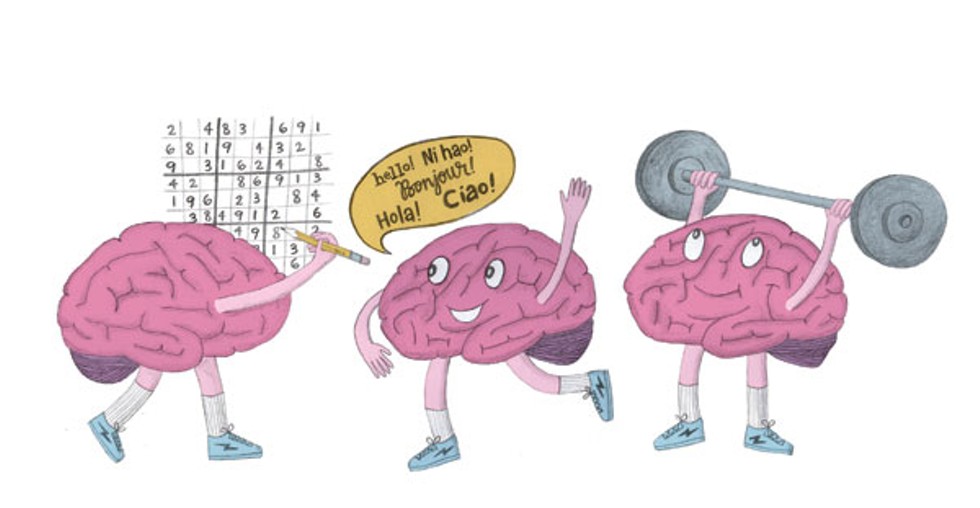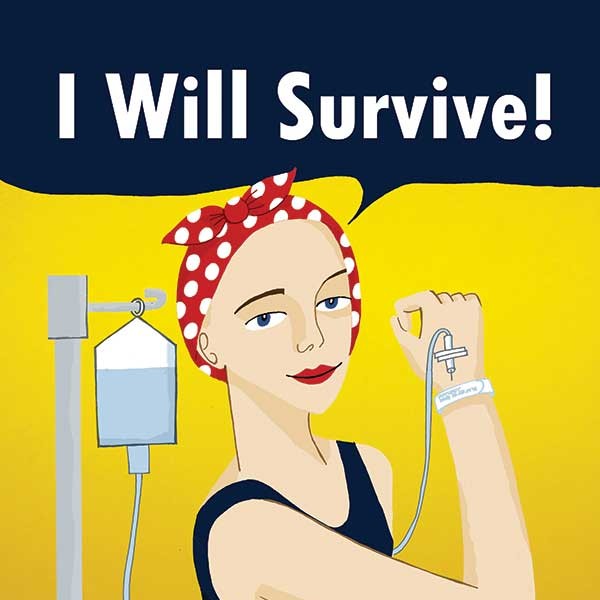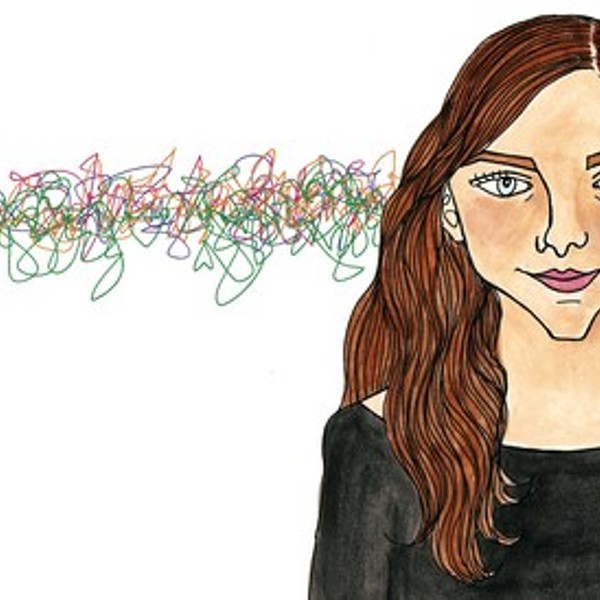A guy walks into a neurologist’s office. “Doc,” he says, “I’m only 47 but I think I’m getting Alzheimer’s. I’m forgetting where I put my car keys, I can’t recall people’s names, and sometimes I can’t remember why I walked into a room. What’s happening to me?” It’s a common conversation and it’s no joke, according to Dr. David Ober of Rockland Neurological Associates in West Nyack, who says he hears complaints like these from patients on an almost daily basis. “They’ll insist, ‘There’s got to be something wrong with me,’” says Ober, who quickly reassures such patients that people don’t get Alzheimer’s disease in their forties. The doctor will then duly suggest running a few tests to check the thyroid, as well as vitamin B and D levels that, when low, can lead to memory loss or poor cognitive function—yet these are rarely the culprits. “They’re looking for a neurological reason for an inability to think, multitask, and remember things—but most of the time it’s just the stress of life. Kids, a demanding job, money worries, marriage issues. People are very stressed out.” Since the answers are not necessarily medical, Ober shifts temporarily into the role of a life coach or personal trainer, suggesting yoga and meditation, exercise, proper sleep, and the like. Most of the time, his patients are just looking for reassurance that everything is okay. But is it?
Whether you call it attention deficit disorder, mommy brain, or mere forgetfulness, minor cognitive dysfunction is a commonplace problem. Why else would so many boldly titled self-help books promise to hold the secrets to building a better brain? There’s The UltraMind Solution by Mark Hyman, MD; Use Your Brain to Change Your Age by Daniel G. Amen, MD; and the New York Times best-selling Brain Rules by Mark Medina, to name just a few—all waving the bright promise of mental clarity to hopeful readers. “Brain fog” may be the new normal, but a host of doctors and scientists is working hard to cut through the mist and restore the prowess of the softly folded gray matter that sets us apart—so we like to believe—from other creatures of the Earth. Why do so many of us struggle to concentrate and remember things? How does our lifestyle help or hurt cognitive function? Why is Alzheimer’s disease such an epidemic in this country, and what can we do about it? Questions like these propel the latest research on how to keep a healthy noggin.
The Amazing, Shrinking Brain
Understanding just what happens to the brain as we age is a key piece of the puzzle—but the view behind the aging cranium is not always a pretty picture. “The most prominent thing that occurs in the brain as we age is that it shrinks—we lose brain mass—and it atrophies over time, like many organs in the body,” says Ober. “If you compare the typical CAT or MRI scans of a 20-year-old and an 80-year-old, you’ll see less brain tissue in the older person.” In the hippocampus, for example—the region of the brain related to memory and learning—most adults, starting in their late 20s, lose volume at the rate of about one percent per year. No wonder some of us can reach expectantly into our cerebral cortexes in search of the name of a person or place and pull out nothing but cobwebs. What’s to be done?
According to researchers like Ruchika Prakash, an assistant professor of psychology at Ohio State University, the antidote to the aging brain is not necessarily crossword puzzles or other brain calisthenics. But it might well be calisthenics itself. Physical exercise—especially the aerobic sort that gets the heart pumping—is perhaps the best thing we can do to build not just muscle mass but brain mass too. In a study she completed with neuroscientist Arthur Kramer at the University of Illinois in 2010, Prakash and her co-researchers found that healthy adults in their sixties actually gained two percent of volume in their hippocampi (instead of losing it, as normally happens with age) after completing a program that involved walking 45 minutes a day, three days a week, for a year. “One of our main findings was that exercise training is associated with a much more efficient recruitment of the prefrontal cortex,” says Prakash. “The prefrontal cortex is the part of the brain responsible for higher-order cognitive operations—such as your ability to organize and plan things. As humans we’re extremely reliant on this cortex. The interesting thing is that the prefrontal cortex is one of the last structures of the brain to develop—it isn’t complete until about age 14 or 15—but it’s also the first structure to start showing deterioration with age.” Not so for the 60-something-year-old participants in the study, who—just with walking three times a week—gained about two years of brain youth. (In contrast, a control group that completed a yearlong nonaerobic program of stretching and toning exercises did not exhibit increases in hippocampus mass or show more efficiency in the prefrontal cortex during brain scans.)
Fit Body, Nimble Mind
Why does exercise—even moderate exercise like walking—have such a powerfully positive effect on brain physiology and cognitive function? One theory is that it helps to increase what brain scientists call neurotropic factors, or nerve-growth factors. “These are responsible for brain development,” says Prakash. They’re a bit like the axle grease we need to keep neurons and synapses firing in the healthy, active brain. And the fact that we continue making these factors throughout our lives supports current theories about the adult brain’s plasticity; in other words, an old dog can learn new tricks. Yet if exercise can have such remarkable effects on thinking, then why aren’t all high-level athletes Einsteins? “Exercise has a benefit for cognition, but on some level I do think that it plateaus out,” says Prakash. “If you’re exercising for 60 hours a week, I don’t think you’ll see a corresponding, linear benefit for cognition. But when you take a basically sedentary population of older adults and offer a one-year intervention with a program of walking, you’ll see that the benefits are phenomenal.”
Aerobic exercise, it turns out, also contributes to neurogenesis—new brain cell formation—in the hippocampus. We might be losing millions of neurons every day like dead hair, but we’re making new brain cells all the time, and if we’re exercising we’re making even more. Yet the “use it or lose it” theory applies here: If we don’t put those new brain cells to work by learning something, or by performing another function that helps the new cells join the neural network, then they will go to waste. Researchers like Prakash are now observing the way this works by conducting studies that combine exercise training with a cognitive element. “It will be interesting to see the results we get,” she says.
An Unthinkable Epidemic
We all have absent-minded professor moments—but there’s a difference between age-appropriate memory loss and dementia, which is the progressive loss of higher-order cognitive functions. Alzheimer’s disease, the most common form of dementia, can start quietly wreaking its neurodegenerative havoc some 15 to 20 years before symptoms manifest. “The average patient comes to me around 72 years of age,” says neurologist Earl Zimmerman, MD, director of the Alzheimer’s Center at Albany Medical Center. “But Alzheimer’s actually starts around age 50.” In the early stages, forgetfulness and mild depression can be the only signals of this silent yet precipitous loss of brain mass. It’s many years later when the higher-order brain functions are affected. With testing, Zimmerman can determine whether the patient has mild cognitive impairment (MCI), a term coined in the late 1990s to describe someone who has memory loss that is beyond what’s expected for one’s age. A certain percentage of MCI-diagnosed patients, but not all of them (the numbers have not yet been pinpointed by scientists), will go on to develop Alzheimer’s. Yet the longer we stay alive, the greater our chances become of falling prey to it. At age 65, 9 percent of the population is diagnosed with Alzheimer’s; at age 75, it grows to 25 percent, and by age 85, a whopping 50 percent develop the disease. What causes Alzheimer’s and how to prevent it are the million dollar questions these days. Scientists know that certain proteins (amyloid and tau) are expressed in the Alzheimer’s brain, leading to nerve cell death and an accumulation of toxins—but how and why this happens is not yet fully understood.
Doctors like Zimmerman meet a lot of patients who see their own aged parents struggling with Alzheimer’s and wonder how they can sidestep the risk for it themselves. “I recommend two things primarily,” says Zimmerman. “Aerobic exercise for 45 minutes a day, four days a week. I do the stationary bicycle myself. I also recommend B-complex vitamins. In a small study last year with MCI subjects, those who took vitamins B6, B12, and folic acid for two years did better with their memory and showed in their MRI a reduction in the rate of atrophy by 50 percent.” Zimmerman adds that being socially active is also important, but unlike some other neurologists, he’s not a fan of cognitive games (“There’s no data behind it, and I hate crossword puzzles anyway,” he says). Controlling hypertension and type 2 diabetes is key as well, since both maladies are strongly linked to Alzheimer’s. Says Zimmerman, “It’s estimated that 20 percent of Alzheimer’s cases are related to or exacerbated by diabetes type 2. So these two epidemics are bumping into each other. It’s a major concern now because we have an obesity problem in this country. The data’s not complete yet, but we’re starting to believe that better control of diabetes will result in better cognitive function and a lower incidence of Alzheimer’s disease in general.”
Live Well to Stay Sharp
Whether we’re dogged by minor forgetfulness or by fears of Alzheimer’s lurking in the distance, the best thing we can do to protect ourselves is live a healthy lifestyle. A wholesome diet—so crucial in avoiding type 2 diabetes, heart disease, and Alzheimer’s—should include “brain foods” like bananas, blueberries, avocadoes, nuts, and foods high in omega-3 fatty acids like salmon and flaxseeds. Says Ober, “All of these foods can help with not only brain health but also cardiovascular health.” Unlike Zimmerman, Ober does recommend keeping the brain stimulated with cognitive games (Sudoku or, yes, even crossword puzzles), or by taking up a new hobby or learning a foreign language. But mainly, the prescriptions that both doctors roll out resemble a modern blueprint for healthy living: Stay active, choose your foods wisely, get enough sleep, and keep stress at bay. Take that, brain fog.
RESOURCES
Dr. David Ober (845) 353-4344
Dr. Earl Zimmerman (518) 262-0800
- Home
- Arts
- Food & Drink
- Towns
- Home & Design
-
Towns
- Accord
- Amenia
- Beacon
- The Berkshires
- Catskill
- Chatham
- Cold Spring
- Cornwall
- Ellenville
- Gardiner
- Garrison
- Germantown
- Goshen
- Great Barrington
- Hunter
- High Falls
- Highland
- Hillsdale
- Hopewell Junction
- Hudson
- Hyde Park
- Kerhonkson
- Kinderhook
- Kingston
- Marlboro
- Middletown
- Millbrook
- Millerton
- Montgomery
- Mount Tremper
- New Paltz
- New Windsor
- Newburgh
- Orange County
- Pawling
- Peekskill
- Phoenicia
- Poughkeepsie
- Putnam County
- Red Hook
- Rhinebeck
- Rosendale
- Saugerties
- Stone Ridge
- Sugar Loaf
- Tivoli
- Wappingers Falls
- Warwick
- Woodstock
- Westchester
- Lifestyle
- Horoscopes
- Cannabis
- Wellness
- The River
- Events
- Chronogrammies
- Newsletters
- Add Your Event
- Support Us
- Login
- sign in
- Username

[]
Tags
About The Author
Wendy Kagan
Wendy Kagan lives and writes in a converted barn at the foot of Overlook Mountain in the Catskills. She served as Chronogram's health and wellness editor from 2011 to 2022.
Support Chronogram
Related Content
Website
Chronogram
















